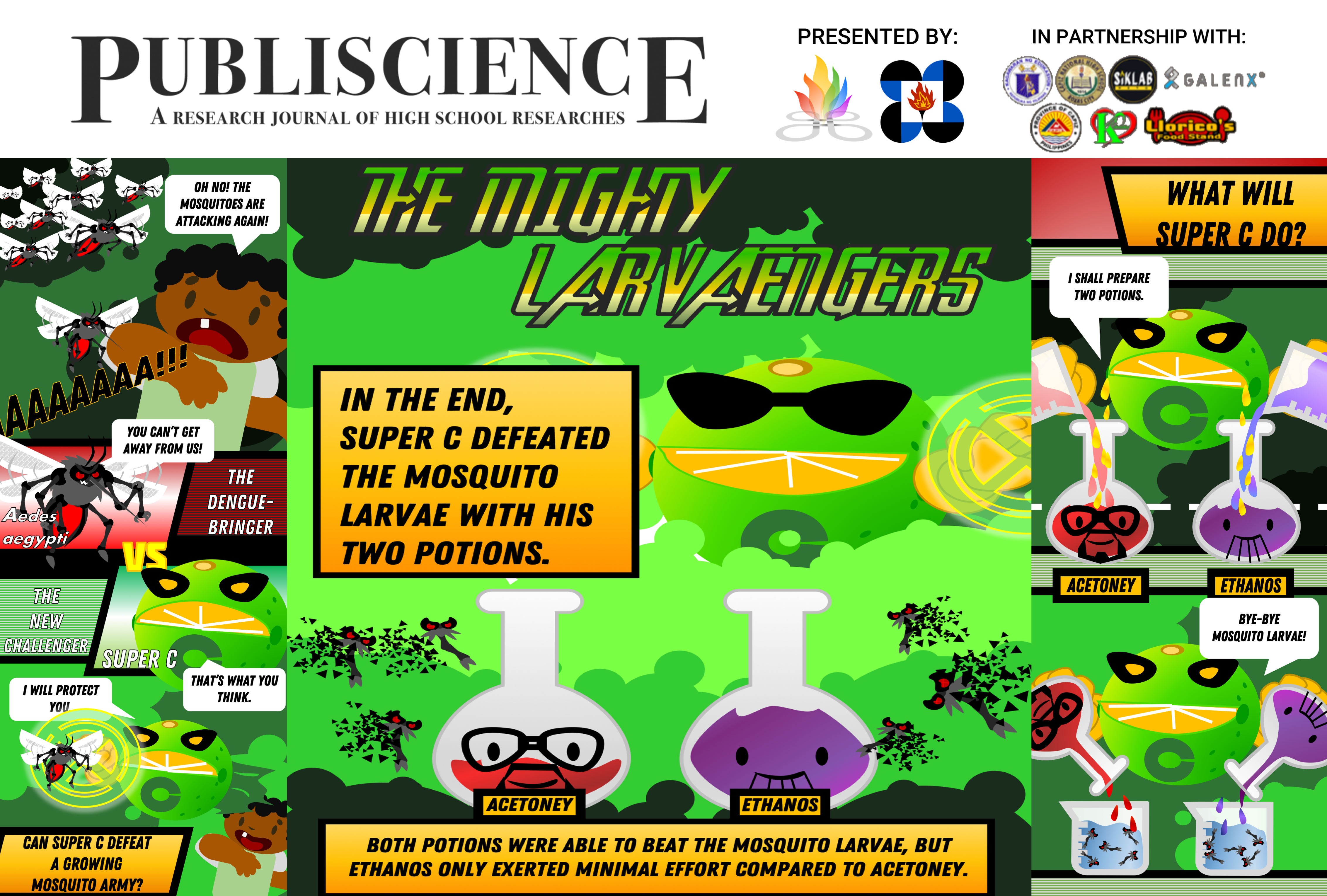Larvicidal activity of Citrofortunella microcarpa (calamansi) peel essential oil against third and early fourth instar Aedes aegypti
MA. ANNA E. CARIGABA1, MARY ANGELI J. LEONIDA1, CARYL JANE C. MASCULINO1, CATHERINE JOY A. MEDIODIA1, and ALICIA G. GARBO2
1Philippine Science High School – Western Visayas Campus, Brgy. Bito-on, Jaro, Iloilo City 5000, Department of Science and Technology, Philippines
2Department of Science and Technology – Industrial Technology Development Institute, DOST Compound, General Santos Avenue, Bicutan, Taguig City
Abstract
This study evaluated the larvicidal activity of Citrofortunella microcarpa (calamansi) peel essential oil (EO) against third and early fourth instar Aedes aegypti. Larvicidal assay was performed against the test organisms to determine the efficacy of the essential oil at 8 ppm, 9 ppm, 10 ppm, and 11 ppm concentrations. Data on the larval mortality after 24 hours of exposure were analyzed using Probit Analysis. Results from the bioassay revealed that calamansi peel EO in 95% ethanol possessed great larvicidal potential with an estimated LC50 of 8.89 ppm and LC90 of 10.57 ppm. This implies that calamansi peel EO is effective at low concentrations against third and early fourth instar Ae. aegypti mosquito larvae and may be used as a potentially safer and alternative biolarvicide posing minimal harmful effects to non-target organisms.
Keywords: bioassay, biolarvicide, Citrofortunella microcarpa, essential oil, limonene


